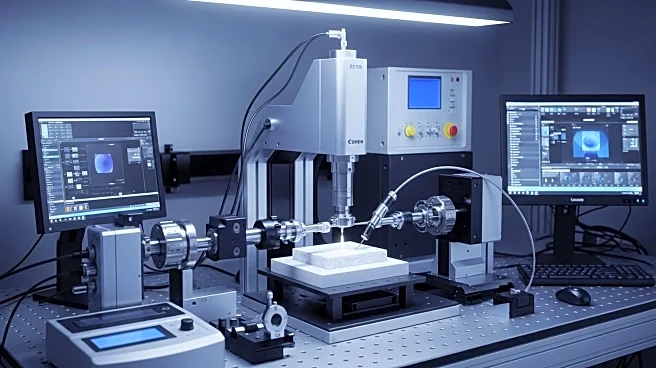What's Happening?
Researchers have utilized ultrafast THz-pump and femtosecond X-ray diffraction techniques to study the dynamics of polar skyrmions. These experiments reveal the unique collective atomic motions and dispersion of polar skyrmions, which differ from conventional ferroelectrics and magnetic skyrmions. The study highlights the confinement of polarizations in nanobubbles, creating integrated atomic gearsets. The research also uncovers the dispersion relation of skyrmion collective modes, showing avoided crossing of phonon bands due to strong hybridization of polarization and elastic waves.
Why It's Important?
This research provides insights into the fundamental properties of polar skyrmions, which could have significant implications for the development of advanced materials and technologies. Understanding the dynamics and dispersion of skyrmions can lead to innovations in nanoscale energy transport and piezoelectric materials. The findings may influence future research in material science, particularly in designing materials with enhanced piezoelectric properties and dynamic manipulation capabilities. The study contributes to the broader understanding of topological polar nanotextures and their potential applications in electronics and energy systems.
What's Next?
Further research is expected to explore the control of polar skyrmions through temperature and electrical bias, potentially leading to tunable material properties. The study's findings may inspire new approaches to material design, focusing on the manipulation of polar topology and phonon transport. Researchers may continue to investigate the interactions between skyrmions and other material phases, aiming to develop materials with tailored dynamic responses. The ongoing exploration of skyrmion dynamics could pave the way for breakthroughs in energy-efficient technologies and advanced electronic devices.
Beyond the Headlines
The study of polar skyrmions opens up possibilities for novel applications in nanotechnology and material engineering. The ability to control skyrmion dynamics through external stimuli suggests potential for adaptive materials that respond to environmental changes. This research may also influence the development of new computational models and simulations, enhancing the predictive capabilities of material behavior at the nanoscale. The findings highlight the importance of interdisciplinary approaches in advancing material science and technology.










